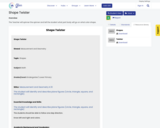
The Teacher will spinner the spinner and tell the student what part body will go on what color shape.
- Subject:
- Cross-Curricular
- Material Type:
- Game
- Author:
- Sandy Turner
- Date Added:
- 05/20/2022

The Teacher will spinner the spinner and tell the student what part body will go on what color shape.

K.MG.2a the student will identify, describe, name, compare, and construct plane figures (circles, triangles, squares, and rectangles). A) Identify and name concrete and pictorial representations of circles, triangles, squares, and rectangles regardless of their orientation in space.
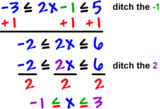
This resource provides a unit of editable items on solving two-step and multi-step inequalities which cover SOLs 7.13 and 8.18. The resources can be used for a combined Math 7/8 curriculum or can be broken up by grade level and used in pieces

The Big Idea: Kinesthetic learning incorporating programming and language instructionConcept: Programming Bee-Bot while learning community location vocabulary and giving directions in SpanishContext: Students will use the Bee-Bot Community Map to talk about the location of various places in the community and area in Spanish.

The Big Idea: Kinesthetic learning incorporating programming and language instructionConcept: Programming Bee-Bot while learning school vocabulary and the verb ESTARContext: Students will use the Bee-Bot School Map to talk about the location of various places in the school building and area in Spanish.
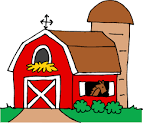
The Big Idea: Kinesthetic learning incorporating programming and language instructionConcept: Programming Bee-Bot while learning rural and farm vocabulary, and using the verb IR-to go, in the preterit tense. Context: Students will use the Bee-Bot Country Roads Mat to talk about the location of various places and animals in the country. They will use the preterit of IR to talk about where someone went.

This is a remix of Start-Stop Counting from Illustrative Mathematics, https://tasks.illustrativemathematics.org/content-standards/tasks/361. The purpose of this activity is to give students practice on counting to 100 to support sol K.3a. Counting skills are essential components of the development of number ideas. For some Kindergarten students, it is a difficult skill that requires a lot of practice. This counting activity is like the game Duck Duck Goose except there is no chasing to get a spot. This fast-paced game will keep your students’ attention because it is so fun! Also, I have added a 100-chart partner activity for counting to 100.

Strong Passwords is a "King of the Mountain" style game created using Gamilab. Students will answer ten true or false questions about passwords in order to help the climber get to the top of the mountain. It is based on SOL 3.11: The student will create examples of strong passwords, explain why strong passwords should be used, and demonstrate proper use and protection of personal passwords.
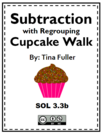
Subtraction with regrouping is a skill that we practice throughout the school year because my students need lots of practice. This activity supports sol 3.3b, create and solve single-step and multi-step practical problems involving sums or differences of two whole numbers, each 9,999 or less. The students make a big circle around the room and play a cakewalk style game. When the teacher stops the music, they sit in front of the closest card and subtract the two numbers to find the difference. Students use their knowledge of place value and estimation to determine if their answer is reasonable. With this game, I was able to incorporate movement into my classroom. I love seeing my students have fun while learning!

In the Swimming with the Fishes: How Changes in Temperature Impact Survival game, students explore how changing water temperatures impact the survival of different fish species over 100 years. Concepts addressed in the game include the difference between climate and weather, how cold-blooded vs. warm-blooded animals adapt to temperature, and environmental changes over time. There are two versions: a single-player version or a multiplayer version which is designed to be facilitated by a teacher while projecting the activity on a large screen in a whole class or small group setting so that all participants can simultaneously view the gameplay.

I created this activity to give students extra practice with identifying synonyms and antonyms. This activity keeps students engaged and thinking. I begin teaching synonyms and antonyms at the beginning of the school year. My students play this game throughout the year. Occasionally I add new words so my students are continually being challenged. This is excellent practice for SOL 4.4b.

An exciting game of fitness entices the students' interest in synoyms, antonyms, and homophones. Fitnesss equipment is used to add excitment to a competitive game of "who can get there first". In this activity, students will answer questions to get the chance to exercise on a piece of equipment. The first team to get around the path first with the most correct answers wins the game.

The 7 Cups and VBCPS Growth PathsPersonalized Growth Paths contain activities made for those dealing with a certain situation. It helps a person understand what they are dealing with and self-heal with activities that are expertly compiled.There is also a “gamified” element to the Paths. Students complete “Steps” to fill their cups and move ahead on their chosen path.You can find slides, videos, PlayPosit playlist here or the Teen Being Growth Path on 7 Cups as well with a free membership.

1.RV.1c Identify antonyms and synonyms

The 7 Cups and VBCPS Growth PathsPersonalized Growth Paths contain activities made for those dealing with a certain situation. It helps a person understand what they are dealing with and self-heal with activities that are expertly compiled.There is also a “gamified” element to the Paths. Students complete “Steps” to fill their cups and move ahead on their chosen path.You can find docs, slides, and videos here or the Time Management Growth Path on 7 Cups as well with a free membership.
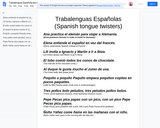
These are some Spanish tongue twisters covering the FIVE (5) vowel sounds as well as the "ll" and "ñ".

The Egyptian Barter Game is a lesson designed to get students active in the classroom while learning about Egyptian culture and the barter system. It is a card game (using homemade cards and other materials) which should be played more than once so students can consider their strategies used to barter their "haves" for their "needs." It should not be students' first introduction to Egyptian culture but should come after some exposure to what life was like in ancient Egypt. Addresses Virginia SOL: HSS.2.9, HSS.3.2, HSS.3.8, HSS.3.9

The Egyptian Barter Game is a lesson designed to get students active in the classroom while learning about Egyptian culture and the barter system.
*Remixed to include reflection questions to be used in World History I.
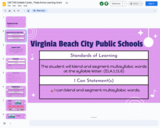
Standards of Learning
The student will blend and segment multisyllabic words at the syllable letter. (ELA.1.11.6)
I Can Statement(s)
I can blend and segment multisyllabic words.

K.FFR.3 Phonics and Word Analysis: The student will apply phonetic principals to read and spell words. A – Identify capital and lowercase letters of the alphabet